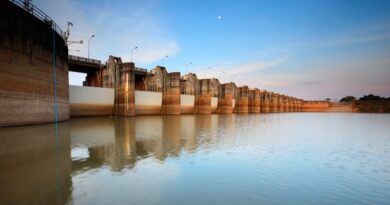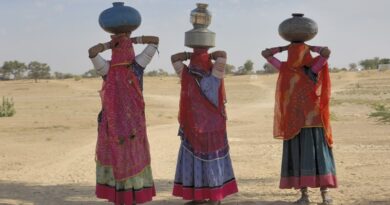Groundwater depletion could reduce India’s winter cropped acreage significantly

Millions of people in India face a serious threat to their livelihoods and food security due to overexploitation of groundwater resources, a new international research study has said, warning that the country could witness a steady and significant decline in winter cropped acreage.
The exhaustive study, one of the latest that looks at India’s water-food nexus, notes that excessive strain on India’s groundwater threatens its agricultural sector and current government interventions have been largely inadequate to the scale of the problem.
India is one of the world’s biggest crop producers and as many as 600 million people – more than half of its current population of 1.3 billion – rely on agriculture for their livelihoods. The country is the world’s second-largest producer of wheat and rice.
Impressive food-production gains have been achieved since the 1960s as reliance on irrigation wells has increased, allowing Indian farmers to expand production into the mostly dry winter and summer seasons.
India is now the world’s largest consumer of groundwater and aquifers are rapidly becoming depleted. The government has been suggesting that farmers switch from groundwater-depleting wells to irrigation canals, which divert surface water from lakes and rivers.
But, in a study published recently in the journal Science Advances, lead author Meha Jain of the University of Michigan and her colleagues have concluded that a switch to canal irrigation will not fully compensate for the expected loss of groundwater in Indian agriculture.
The authors estimate that if Indian farmers lose all access to groundwater in overexploited regions, and if that irrigation water is not replaced with water from other sources, then winter cropped acreage could be reduced by up to 20 per cent nationwide. However, that scenario seems highly unlikely and was included in the study only as an upper-bound estimate.
It seems more likely that any future groundwater shortfalls would be at least partially offset by increases in canal irrigation. But even if all Indian regions currently using depleted groundwater switch to canal irrigation, winter cropped acreage could still decline by seven per cent nationwide and by 24 per cent in the most severely affected locations.
“Our results highlight the critical importance of groundwater for Indian agriculture and rural livelihoods, and we were able to show that simply providing canal irrigation as a substitute irrigation source will likely not be enough to maintain current production levels in the face of groundwater depletion,” said Jain.
The study analyzed high-resolution satellite imagery and village-level census data and focused on winter cropped acreage. While nearly all Indian farmers plant crops during the monsoon to take advantage of seasonal rains, winter agriculture is mainly reliant on groundwater irrigation and now accounts for 44 per cent of the country’s annual cropped acreage for food grains.
“These findings suggest that other adaptation strategies, in addition to canal expansion, are needed to cope with ongoing groundwater losses,” said Jain, an assistant professor at the U-M School for Environment and Sustainability.
The possibilities include switching from winter rice to less water-intensive cereals, increased adoption of sprinklers and drip irrigation to conserve water in the fields, and policies to increase the efficiency of irrigation canals.
The study by Jain and colleagues is the first to use high-resolution empirical data, including census data about the irrigation methods used in more than 500,000 Indian villages, to estimate the crop production losses that may occur when overexploited groundwater is lost.
The researchers also found that increased distance from existing irrigation canals is strongly associated with decreased acreage planted with winter crops. In the future, a greater reliance on canals could increase inequities related to irrigation access, according to the authors.
“This suggests that while canals may be a viable form of irrigation for those who live near canals, they may lead to more unequal access to irrigation across villages compared to wells, with negative impacts for those who live farther from canals,” the study states.
In addition, the lakes and rivers that feed irrigation canals rise and fall in response to rainfall variability, unlike deep groundwater wells. So, a greater reliance on canal irrigation in the future would result in increased sensitivity to year-to-year precipitation fluctuations, as well as any long-term trends due to human-caused climate change.
“Understanding the complex relationship between food security and water availability is crucial as we prepare for future rainfall variability due to global climate change,” said co-author Gillian Galford of the University of Vermont.


